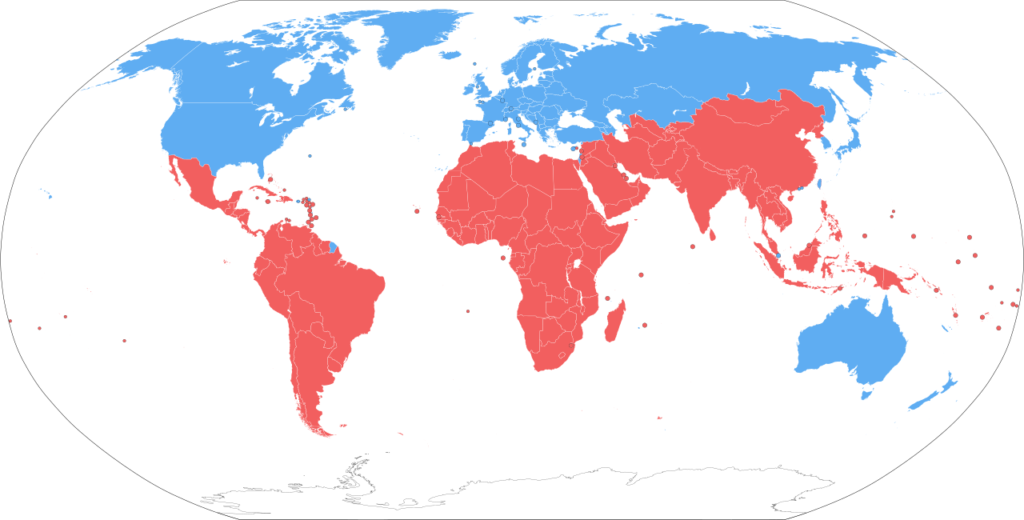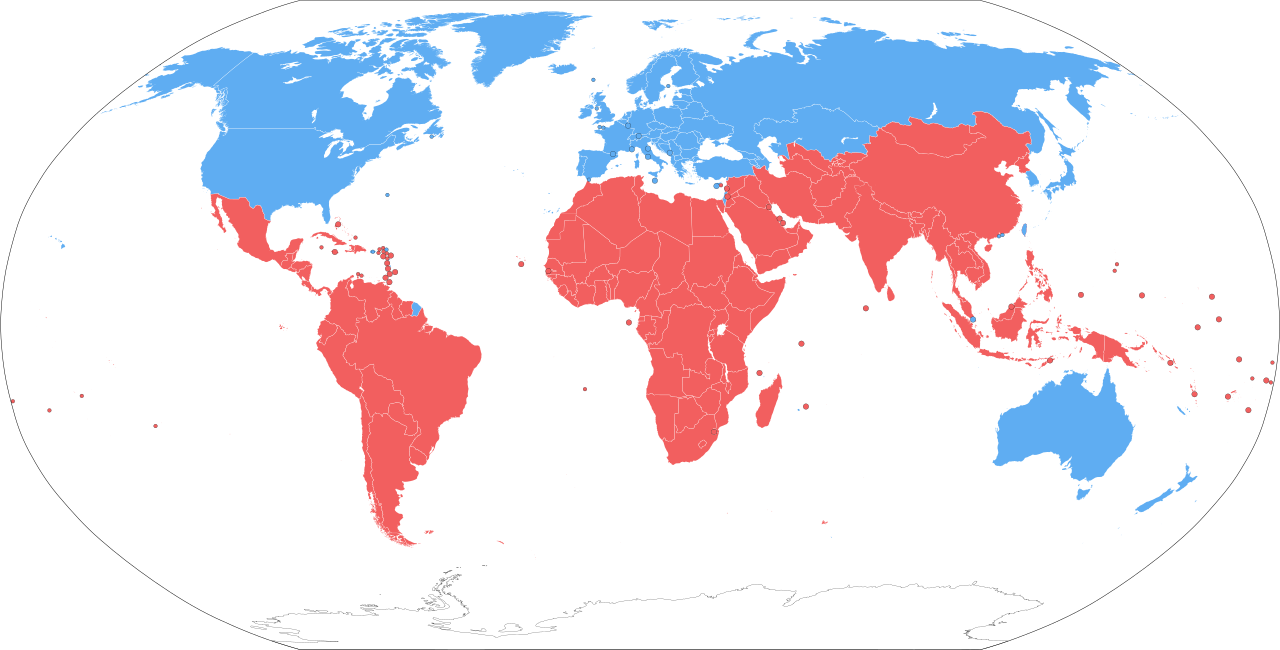What is the Global South, and why is it important when discussing queer migration?
The Global South is, in a highly generalized sense, thought to include Latin America, Africa, Asia, and Oceania.[*] Notably, the areas that are included in the Global South consist not just simply the regions that lie south of the equator, as might be assumed by the name. Rather, the term acts as “a general rubric for decolonized nations roughly south of the old colonial centers of power.” This differs from the Global North, which is usually seen to generally include North America and Europe.[*] However, it is important to take these classifications with a grain of salt, as nations and their relationships with one another are constantly evolving and changing. Additionally, these classifications still hold the weight left from older, now-obsolete terms such as “First World” and “Third World”. Despite this, the terms “Global North” and “Global South” are currently the terms we apply to denote the differences between the two regions.

The above map depicts the general North-South divide. However, this separation is not as straightforward as it may first appear. If you look closely, you can see overlap between the blue (Global North) and red (Global South). This is because, as discussed above, the Global North and Global South are not impermeably divided from one another by a single line. There are many factors that complicate the separation of the Global North and Global South, with areas such as wealth being just one.
Despite the term ‘Global South’ rising in usage and popularity, research involving the Global South tends to be carried with and from a Global North-centered perspective. In this way, the Global North continues to be falsely reinforced – in a fashion reminiscent of colonialism – as something of an “ideal” that Global South nations should strive for. In queer migration specifically, there is an often-held assumption that queer migrants move strictly, or at least most often, in a South-to-North pattern – which completely overlooks patterns of South-South queer migration. Beyond this misconception, it is also commonly assumed that “queer-friendly innovations generally originate in the Global North and flow uni-directionally to the Global South”, which discounts the diverse organizations throughout the Global South that are working to improve not just LGBTQ+ rights in general, but also the experiences of queer migrants.
